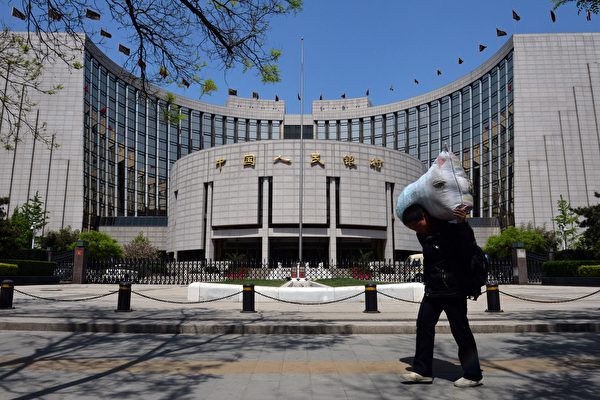The Chinese Communist authorities recently made a special report to the National People’s Congress for the first time, revealing that the government’s statutory debt exceeded 70 trillion yuan at the end of 2023. However, the scale of the government’s implicit debt, which is much larger than the statutory debt, has not been disclosed.
In a recent report, officials disclosed 8 cases of local government implicit debt, totaling over 11.7 billion yuan, including Tianjin Port Free Trade Zone in Tianjin borrowing 7.397 billion yuan directly from local state-owned enterprises for “borrowing new to pay the old” to repay debts.
According to the official report, from June 2018 to May 2023, the Tianjin Port Free Trade Zone Management Committee borrowed a total of 14.732 billion yuan from Tianjin Port Investment Holdings Group Co., Ltd. and its subsidiaries, all of which were then transferred to Tianjin Lingang Investment Holdings Co., Ltd. to repay its existing debts. As of May 2023, the remaining borrowed balance was 11.975 billion yuan, with 7.397 billion yuan forming new implicit debt after deducting 4.578 billion yuan used for “borrowing new to pay the old” in the local government implicit debt monitoring system.
The official report also included cases such as Liaoning Province’s Bayuquan District borrowing 1.996 billion yuan from local state-owned enterprises for new implicit debt, Hunan Province’s public vocational school adding 0.45 billion yuan in new implicit debt through lease construction, Fuzhou City in Jiangxi Province’s Dongxiang District borrowing 0.34 billion yuan from local state-owned enterprises for new implicit debt, and Meihuakou City in Jilin Province adding 0.298 billion yuan in new implicit debt through loans to public hospitals.
Additionally, Inner Mongolia’s Baotou City borrowed money from a financing leasing company to repay existing implicit debt and handle debt restructuring, resulting in an inaccurate debt restructuring of 0.068 billion yuan. Lingsha County in Hainan Province requested an agent bank to make interim payments and long-term settlements in new implicit debt of 0.84 billion yuan. Yinchuan City, Ningxia Hui Autonomous Region, added 0.32 billion yuan in new implicit debt through the pledge financing of rural drinking water and agricultural irrigation franchise by state-owned enterprises.
The State Council of the Chinese Communist Party recently made a special report to the National People’s Congress for the first time, revealing that the government’s statutory debt exceeded 70 trillion yuan at the end of 2023, with a national debt balance of 30.03 trillion yuan and a local government statutory debt balance of 40.74 trillion yuan.
It is worth noting that local debt risks are concentrated in the debts raised by local urban investment platforms, which are not included in the government’s statutory debt. According to Caixin Media, the Chinese Communist Party has conducted multiple rounds of statistics on government implicit debt and financing platform operational debt in 2013, 2018, 2023, etc., with the scale far exceeding statutory debt, but the data has not been made public. Another key indicator for measuring government debt level, the debt ratio (the ratio of government debt balance to comprehensive financial resources), was also not disclosed this time.
According to media reports in mainland China, the statutory debt mentioned above is only a part of the Chinese government’s debt. In reality, local governments still have a large amount of implicit liabilities, such as urban investment debt, the magnitude and impact of which cannot be ignored.
Regarding urban investment debt, according to “Yicai” reported in July last year, local urban investment companies, as important carriers for local infrastructure construction, have accumulated a huge amount of debt. It is estimated that the national urban investment company’s interest-bearing debt scale has reached nearly 60 trillion yuan, with approximately 25% in bond form and 75% in non-bond form.
However, the Chinese Communist authorities have repeatedly stated that the central government’s finance will not rescue local governments. In January of last year, Liu Kun, the Minister of Finance of the Chinese Communist Party, stated, “Next steps will further break the government’s expectation of backing.” A public letter issued by the Ministry of Finance also emphasized that regarding local debt, the principle of “the central government does not assist” will be implemented, and “whose child, whose responsibility.”

